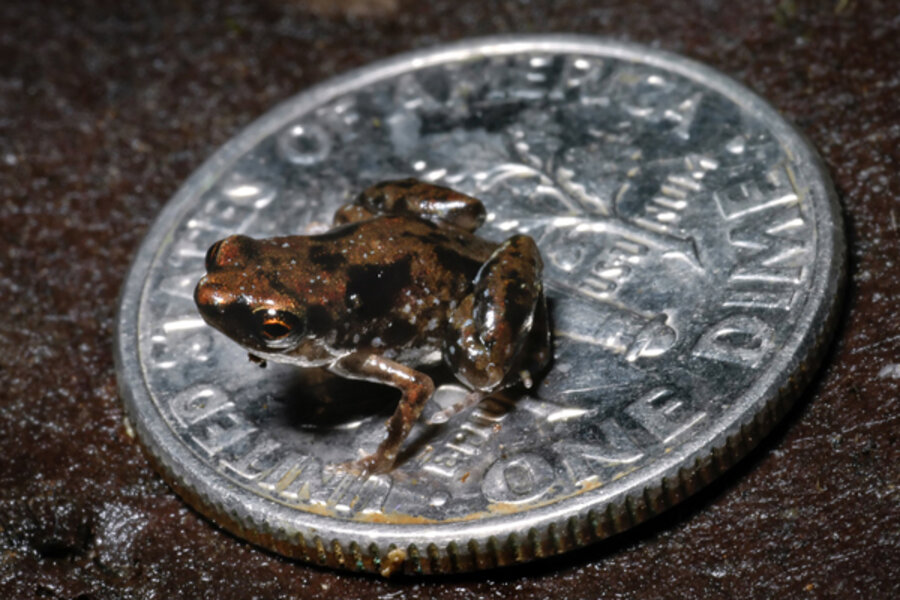
Christopher Austin/ Louisiana State University/REUTERS
Paedophryne amauensis, the world's smallest frog, is pictured in this undated handout photo received by Reuters January 12. Discovered by scientists during recent field work in eastern Papua New Guinea in 2009, the adult P. amauensis is an average of 7.7 millimeters long. The tiny amphibians live amongst the leaf litter on the rainforest floor. The new species was announced January 11 in the online journal PLOS One.




